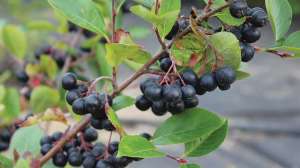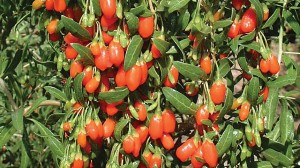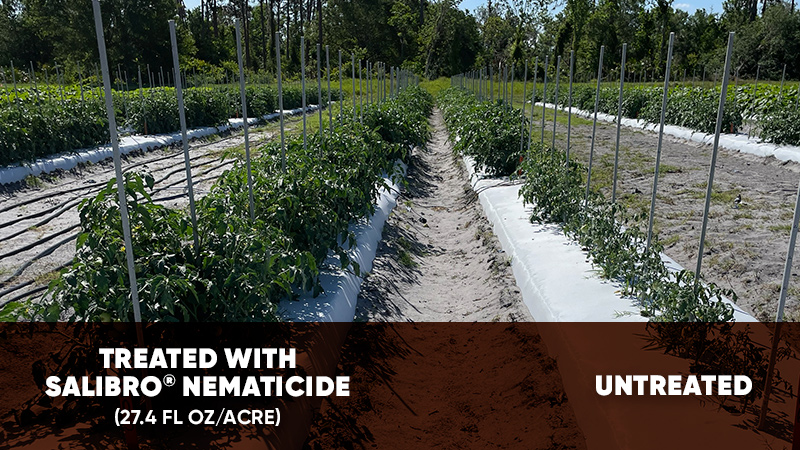What You Need To Know About Aronia, Goji, And Saskatoon Berries
Here is some need-to-know information about each of these berry plants from research universities and leading growers throughout the U.S.

Aronia Berries (Photo credit: Wikimedia Commons)
ARONIA BERRIES – Aronia, sometimes called black chokeberry, is a deciduous shrub native to eastern North America. The thick bushes grow to 6 to 8 feet. Aronia requires a damp, acid soil with sufficient rain during the growing season. The pea-sized, violet-black berries are harvested in autumn. Berries have a strong, stable and natural color, with a dry and sour strong flavor.
– Washington State University

Goji Berries (Photo Credit, Wikimedia Commons)
GOJI BERRIES – Goji is also known as goji berry, wolfberry, boxthorn, and matrimony vine. Worldwide, other closely related species or subspecies may also be harvested and are known by the same or similar common names, though the fruit quality and productivity is likely to be lower. Plants can be found growing in nearly all U.S. states and Canadian provinces. The Goji plant is a slightly thorny deciduous woody shrub, typically 3 to 6 feet tall when cultivated and pruned, though plants can reach 12 feet tall in their natural state. Goji is a member of the solanaceous (tomato or nightshade) plant family, so its cultural and nutritional needs are similar.
– Penn State University

Saskatoon Berries (Photo credit: Wikimedia Commons)
SASKATOON BERRIES – Saskatoons are actually a pome fruit and are more closely related to apples or roses. Other common names for them are Juneberry, Serviceberry, and shadbush. They are very cold hardy, grow in USDA zones 2-6, and require a well-drained soil and a broad pH range of 5 to 7.5. They also require a chilling period of about 90 days with temperatures below 40 degrees Fahrenheit. Saskatoons are long-lived and will produce fruit for 50 or more years if properly cared for. The harvest season for our area typically runs for about three weeks, starting around the Fourth of July. Saskatoons are typically picked by hand for fresh market. Although they can be mechanically harvested for fresh market, it may reduce shelf life.
– Steve DuCheney, owner of Saskatoon Michigan Farm & Nursery










